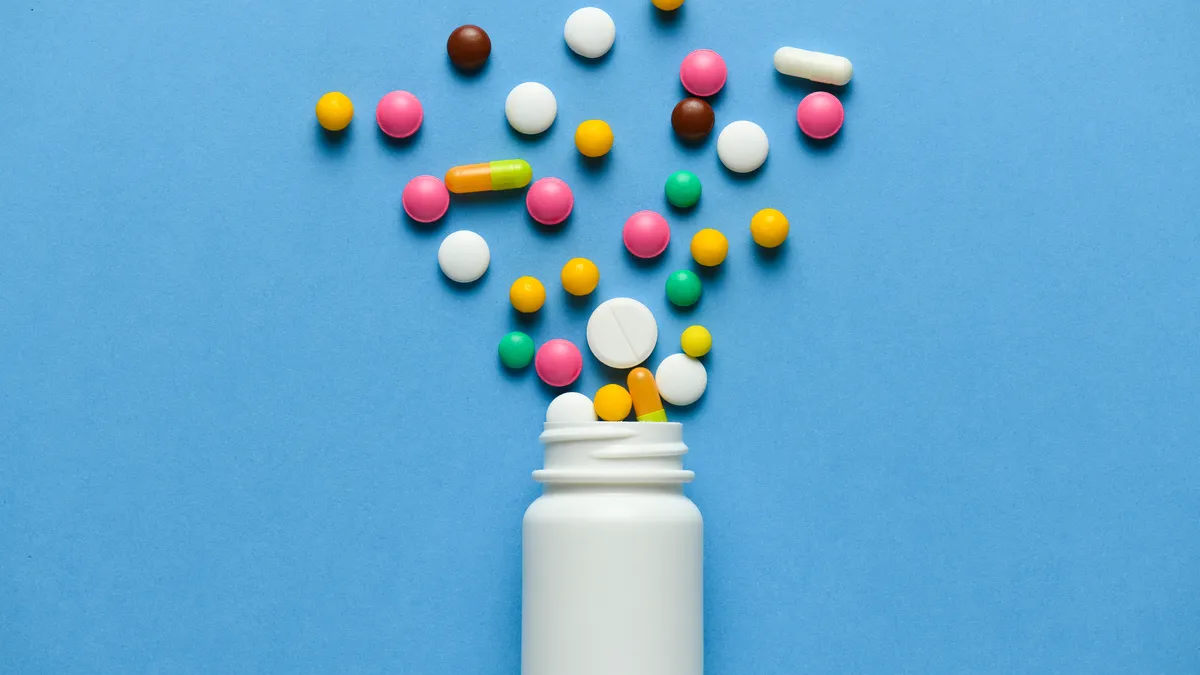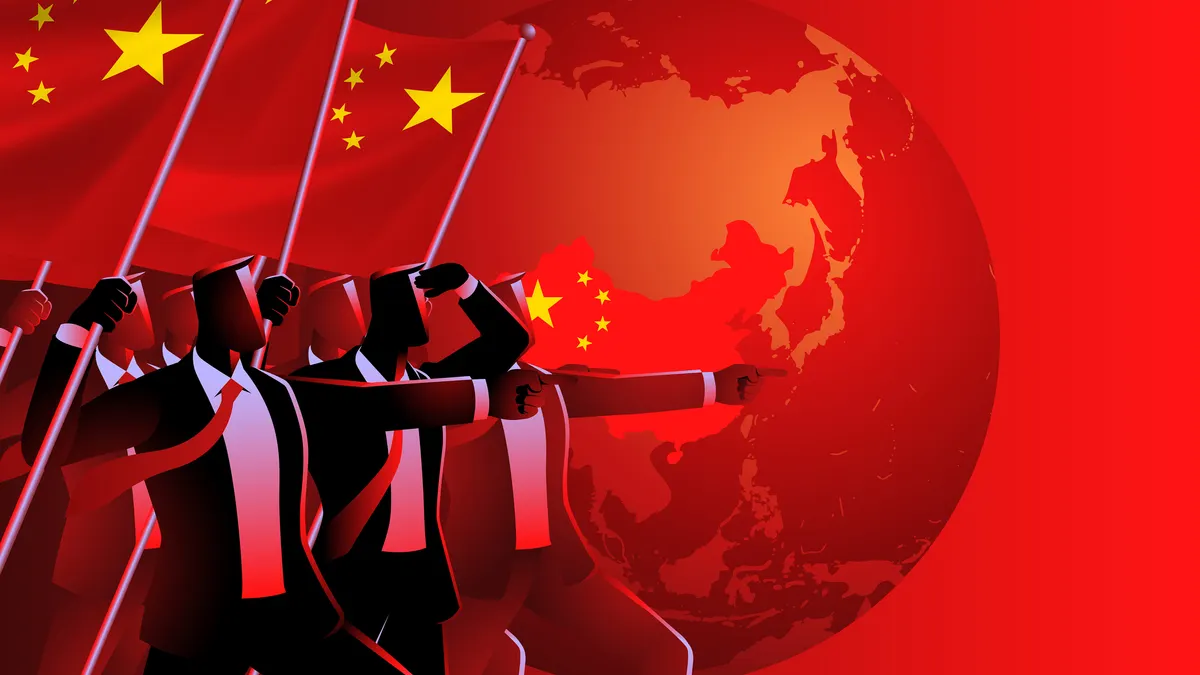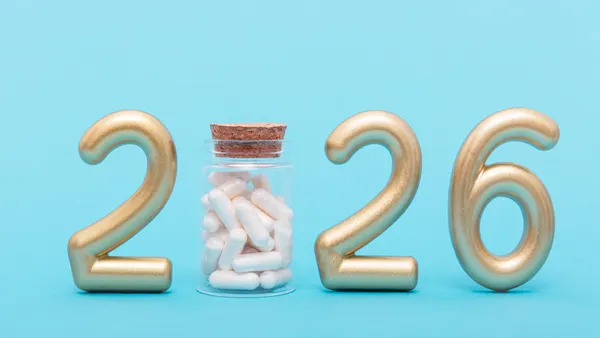Dr. Reddy’s Laboratories has set its sights on major goals this year. A few weeks ago, the multinational generic drug company outlined a strategy to investors that it hopes will lead to double digit growth in the medium term.
To hit that target, the company, headquartered in India, is using a multi-pronged approach that will build on the main facets of its business — retail pharmacy medications, hospital drugs and OTC products — while branching out into biosimilars, nutraceuticals, cell and gene therapies and more direct-to-consumer sales.
Called “Horizon Two,” the strategy also aims to move Dr. Reddy’s from being one of the top 10 generic drug companies in India to one of the top five, while almost doubling its portfolio in North America from 170 assets to around 300 — all while navigating a generic drug industry that is seeing “historic” levels of price pressures and ongoing disruptions to the global supply chain.
For Marc Kikuchi, CEO of Dr. Reddy’s North America, pulling this off won’t require being successful at every turn. Instead, Kikuchi says that some failure will have to be involved so that the company can learn and bounce back stronger than before.
Here, Kikuchi discusses the company’s plans for growth, the challenges that could lie ahead, and why “controlled explosions” are at the heart of his leadership style.
This interview has been edited for length and clarity.
PharmaVoice: How have you been impacted by the various global disruptions to the supply chain?
Marc Kikuchi: In the last year and a half, our supply chain has become much more stable. Our ability to supply products has been much more consistent to our customers. Despite all of the headwinds — and we did not pass on the increased expenses. We had to absorb almost $10 million more of high airfare to transport product from India to the U.S.
Two years ago when the pandemic hit, we were rushing to get product here and we were maybe 50/50 in terms of air freight and sea freight. Today, over 75% of our shipments are coming via sea, which is a strong indicator of our safety stock inventory levels in the U.S. And what that does is it helps keep costs lower for us because air freighting is significantly more expensive than sea freighting.
How are you driving growth for Dr. Reddy’s right now?
We’re continuing to expand the three cores of our business: our retail pharmacy products, our health systems products, which are historically injectable products, and the over the counter products. We call that ‘Horizon One.’ And now what we're trying to do is build ‘Horizon Two,’ which includes moving into biosimilars.
Then during COVID-19 we noticed there seemed to be a lot more focus on self-care and self-wellness. In India, we sell nutraceuticals and dietary supplements, and we believe we can bring similar types of assets to the U.S. and really help.
Finally, there is a growing area where healthcare and technology meet, and the patient is directing their own journey — and we want to continue to enable that. One of the things I've heard from younger people, even my own children, is: Why would you stand in the pharmacy for 30 minutes to pick up your script? Why wouldn't you wait the extra day to have them send it to your home? This is a great question, and you're seeing a different perspective on how people want to manage their healthcare. So we're trying to build that capability so that we can also help the patients. This includes expanding our presence on Amazon. So we have a label with Amazon where people can access our over the counter products directly.
"What we like to do is try and fail fast. If a new concept works, fantastic. If it doesn’t, then at least let’s learn from it, modify it and move on."

Marc Kikuchi
CEO, Dr. Reddy's, N. America
We have also launched DrReddysDirect.com so hospitals can order products directly from us.
And then we partner with other companies that have applications where users can connect to a physician who then writes a script, then has product delivered to your home in 24 to 48 hours.
Why out-license your biosimilars for development?
It's pretty expensive to develop biosimilars — anywhere from $100 to $150 million because you have to do the phase 1 and phase 3 clinical trials. And so early on, we were able to find partners who shared the development risk with us.
At the time it looked like you were going to need a sizable commercialization team to be able to get adequate market share. But as time has moved forward, I don't believe you need those armies of 100 to 200 people to market your biosimilar. You should be able to do it much more effectively with a focused effort.
So as the market has continued to evolve, we have become more confident that we can commercialize biosimilars. Now moving forward, we are working closely with our biosimilars development and have already identified three we believe we want to commercialize.
What about the challenges on the regulatory landscape for biosimilars?
People are starting to understand the rules better, and I think the road map is getting clearer. It still comes down to cost.
The big test for the industry is coming next year with Humira coming off patent, and in June or July of next year, several competitors will enter the market. I'll be very curious to see how the market plays at that point and that will help us pivot. This will be a test of a lot of different variables on how to commercialize a biosimilar.
And what are the biggest challenges right now in the direct-to-consumer space?
I'll be candid and say that we're still learning. We had nothing on Amazon a few years ago and now we worked with a big partner to understand how to get our products better positioned. Now we have about 40 products on the healthcare aisle and we continue to build momentum there. So it was a learning process for us.
It's also then making sure that the customer experience is right. When we launched DrReddysDirect.com, we thought: How hard could it be to set up a web portal? Well, you have to make sure you have all the licenses in place, for example. So we only worked with a few customers at first to work out all the kinks.
What we like to do is try and fail fast. If a new concept works, fantastic. If it doesn't, then at least let's learn from it, modify it and move on.
Do you think that this kind of multi-pronged approach — innovating new products but also adjusting how you're marketing and selling those products — is necessary for generics companies to survive in the current landscape?
I think so. The obvious levers continue to be launching new products. Unfortunately, the lifecycle of a new product used to be seven-plus years. But these days, you maybe get three to five years of value out of a new product. So what else can you do?
You can use cost improvement programs, such as getting better acquisition costs of your API if you don't have it in-house. You can reduce internal costs to have a process that gives you a higher yield in fewer steps.
Or you can leverage digital tools. We don’t just use these with direct to consumer sales platforms — we've also started to digitize our core processes like our marketing capabilities.
That said, our portfolio is growing. Since I joined three years ago, we used to have just under 100 products that we marketed — today we have over 170 products. And we actually have fewer people than when I joined the company because we're leveraging these digital tools. Fast forward for our future and we want to double our portfolio again to have over 300 products. But we don't have the luxury of doubling our staff. So how do you do more with the same? It's investing in these digital capabilities.
What is one of the main tenants of your leadership style?
For me it’s about allowing controlled explosions. That's all about empowering your teams to make mistakes and know that failure is an acceptable outcome. You hear a lot of people say it's OK to fail, yet when you fail, you still get smacked around. But you really have to embrace failure. You have to let people try new things because otherwise you're never going to improve. And you’re not going to be pushing boundaries.
















